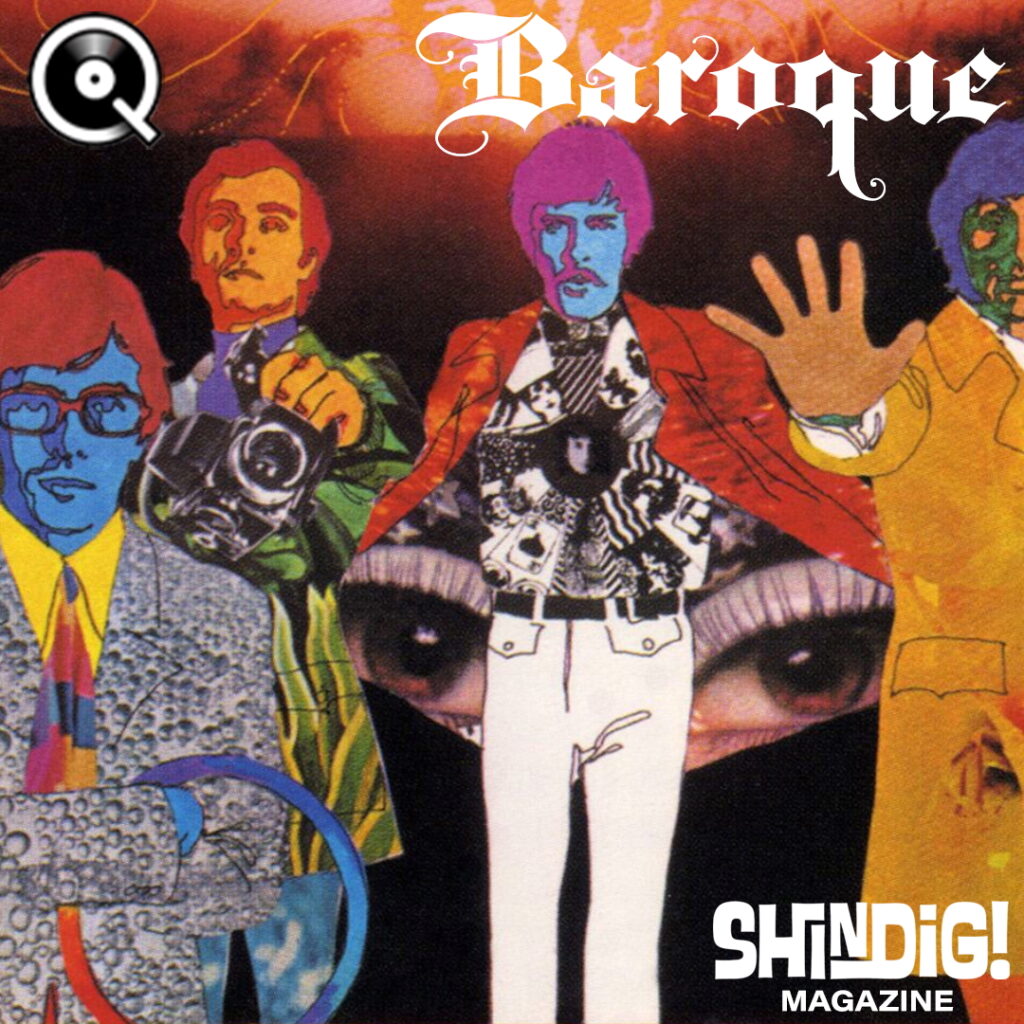Exclusive Shindig! Qobuz playlist #20: Baroque
We’re very excited to be media partners with the truly unique online streaming platform and download store Qobuz. This month, the 20th of our monthly bespoke playlists, which take in all manner of genres and sub-genres, scenes and beyond, then and now, surveys the wealth of baroque-pop made in the UK and USA

Play here or use the scrollable frame with tracklist the bottom of the page. You can sign up for a free trial today. Plans start from £10.83 per month. For more on Qobuz read our interview with MD Dan Mackta here
Partly inspired by both the Bob Stanley & Pete Wiggs Presents American Baroque – Chamber Pop & Beyond 1967-1971 and Tea & Symphony – The English Baroque Sound 1968-1974 (including the somewhat different original, released on Sanctuary in 2007) and the stratospheric rise and brilliance of New York’s The Lemon Twigs, the only contemporary band on this 50 track playlist, this set of songs goes some way in showing how the amalgamation of pop music with classical orchestration and motifs in the ’60s and early ’70s resulted in some truly sumptuous releases.
One thing we have been able to do, which boutique record labels can’t and may not want to do, is mix some of the biggest names alongside regarded cult acts. The influence of “strings and things” was, after all, everywhere.
Even a casual fan of ’60s pop will be aware how The Beatles and talented producer George Martin’s experimentation undeniably paved the way for what is now referred to as “baroque-pop”. Rubber Soul’s ‘In My Life’ is often cited as one of the stylistic’s earliest examples, whilst ‘Eleanor Rigby’ from the following year’s Rubber Soul established orchestral arrangements as a new norm. Close behind were The Rolling Stones’ Brian Jones with the highly effective ‘Lady Jane’, another archetype. Other key records from the UK canon were Procol Harum’s ‘A White Shade Of Pale’.
Baroque is essentially broken into two parts, opening with British artists and closing with an array of acts from the USA. Considering Odessey & Oracle as perhaps the benchmark “baroque-pop” album, we kick off with ‘Care Of Cell 44’, a song that inspired so much to come. From The Beatles (‘For No One’) and The Rolling Stones (‘Lady Jane’) through relevant entries from The Bee Gees, David Bowie, The Kinks, The Hollies, Barclays James Harvest and lesser-knowns Julian Brooks, Matthew Bones, Tim Andrews, Quiet World Of Lea & John, Gordon Waller, and Sunchariot, to the rightly regarded acts in the middle, Honeybus, The Idle Race, and Nirvana. The British selection champions grandiose orchestrated balladry and pop song craft sprinkled with classical inflections.
The American selections, kicking off with undoubtedly the most important baroque band of them all The Left Banke’s ‘She May Call You Up Tonight’ from their groundbreaking January ’67 debut and The Lemon Twigs’ delightful homage to the “American Baroque Sound”, ‘They Don’t Know How To Fall In Place’, from 2024’s epic A Dream Is all We Know, air the timeless nature and accessible pop smarts of this approach to song-craft and production. If the hallowed Beach Boys’ creditability rivals their UK counterparts, and the likes of The Association, Paul Revere & The Raiders, and Harry Nilsson all had hits, the US entries are decidedly more underground. And like all good American interpretations, these tracks sprinkle more sugar, bigger toppings, and brighter colours into the mix, all building on and expanding the British idea. A few of these acts have also appeared on our Sunshine & Flowers – American Sunshine-Pop 1967-68 and Cool Sunday Morning – American Soft-Psych 1966-71 playlists. At the time of release this music was pure and simply pop music.
The split works well, allowing Love’s masterpiece ‘Along Again Or’ to sit alongside Barclay James Harvest’s ‘Galadriel’. It’s in essays like this where these parallels can be drawn. John Lees’ lyrics for the ’78 track ‘A Tale Of Two Sixties’ references Arthur Lee, Love, Forever Changes, and ‘Andmoreagain’, and if you listen to Barclays James Harvest the influence of Love was always there. America and Britain played musical tennis across the Atlantic helping music evolve. The “baroque-pop” era, roughly 1965-75 was a veritable treasure trove of thoughtful and imaginative pop. Its influence has been felt ever since across, and just maybe The Lemon Twigs will invigorate the reach of the golden years Beatles, Beach Boys and beyond for a new audience, proving that in the streaming age musical discoveries and annotation are boundaryless and connected, offering more than any licensed album can ever do. And this is just the tip of the iceberg.

